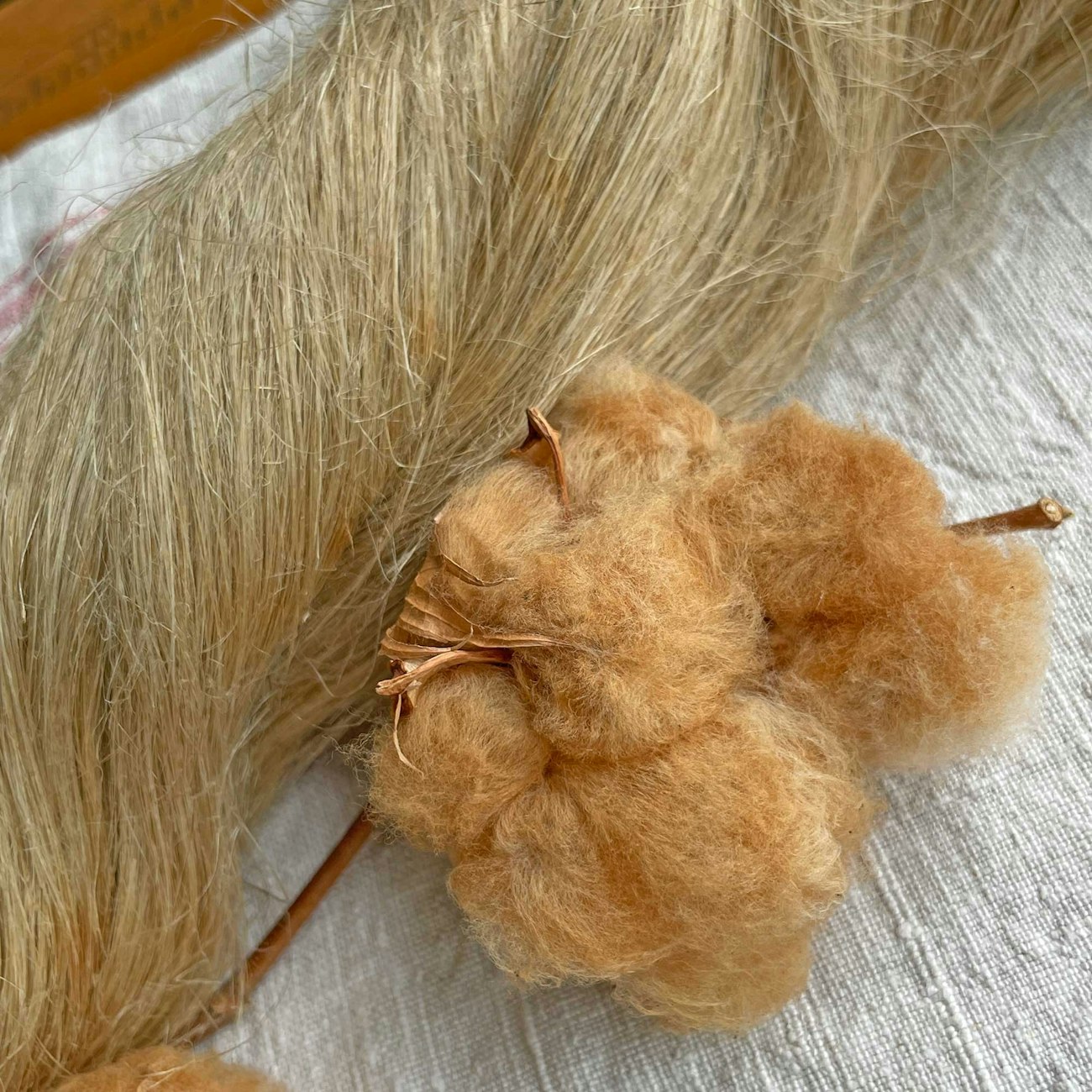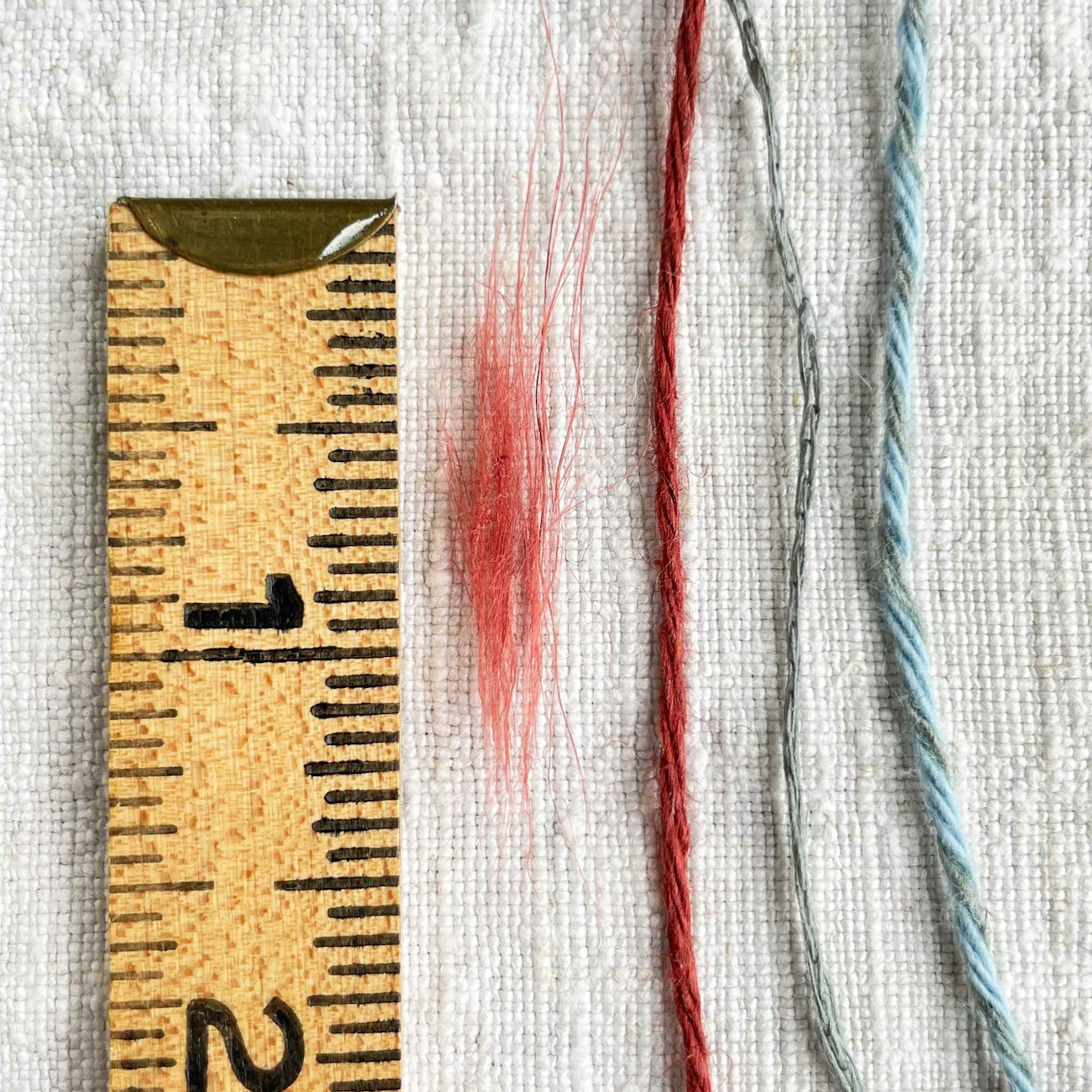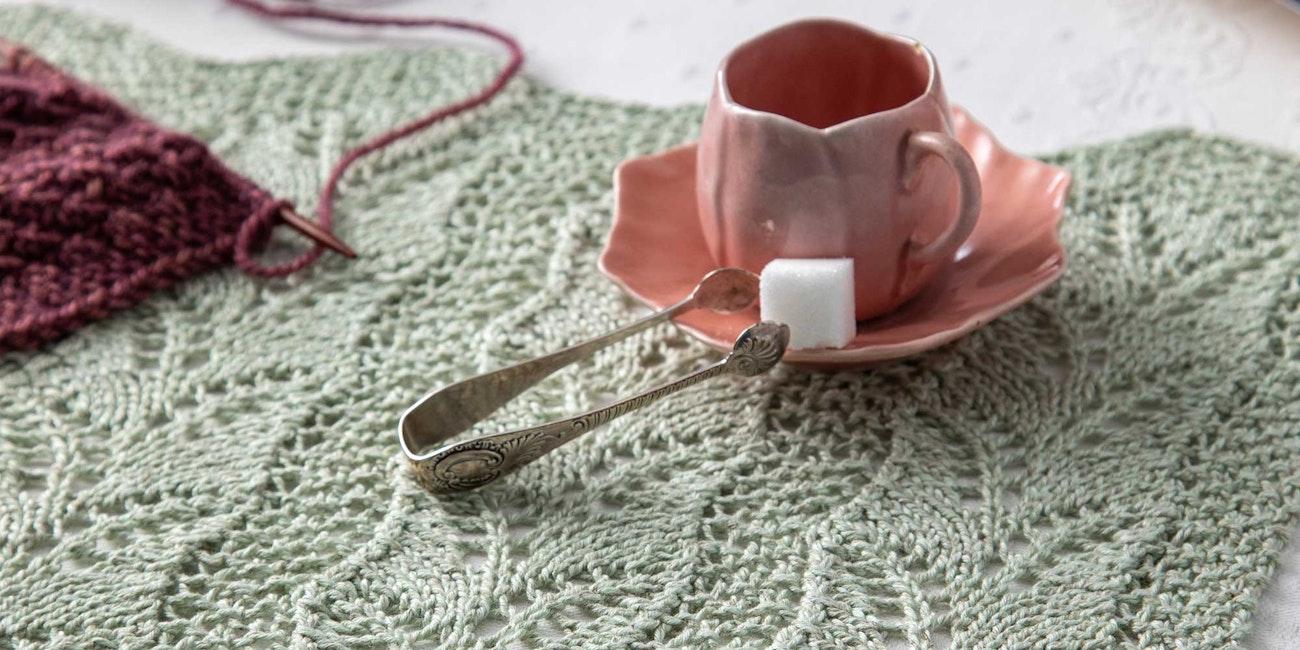Subscriber Exclusive
What I Wish I’d Known about Plant Fibers
Plus—a placemat pattern to knit this summer!
Plus—a placemat pattern to knit this summer! <a href="https://farmfiberknits.com/what-i-wish-i-d-known-about-plant-fibers/">Continue reading.</a>
https://farmfiberknits.com/cdn-cgi/image/format=auto/https://www.datocms-assets.com/101500/1715035575-larson-scale-linen-cotton.jpg?auto=format&w=900
Cotton, linen, and hemp—these three familiar fibers have been clothing our human bodies for thousands of years. However, these plant fibers are less common in many knitter’s stashes than wool, alpaca, and silk. If you’re a knitter who loves bouncy, squishy wools, knitting with linen might feel unforgiving and stiff. Or you might have found that knitting with some cotton yarns are a delight and others less so. What gives?
The long and short of it is that these three plant fibers, in their natural forms, are very different. Where it gets complicated is that the modern mills that create our beautiful yarns today can make the longest hemp fibers short and soft or make downy cotton straight and shiny. Here’s what you need to know:
What we’re told: Cotton, hemp, and flax are totally different
These fibers come from different parts of plants: Cotton is a seed fiber, and hemp and flax are bast fibers derived from woody stems. Short, cashmere-fine cotton fibers grow around each seed that forms in a cotton boll. These 1–2" (2.5–5 cm) fibers plump as they mature and cause the seed pod, called a boll, to pop open. Cotton fiber is basically the plant’s approach to surrounding precious seeds with packing peanuts.
Linen, which is called flax when in fiber form, and hemp, are long fibers extracted from the stems of plants. With careful processing, these fibers can be nearly the length of the entire plant, from root to flower. Flax plants can grow to about 40" (1 m) tall, and hemp can grow to 5 to 15 feet (1.5 to 4.6 m) tall.
 A sweet boll from Sally Fox’s cotton nursery. Learn more about Sally on the Long Thread Podcast (See Resources).
A sweet boll from Sally Fox’s cotton nursery. Learn more about Sally on the Long Thread Podcast (See Resources).
For knitters, what does this mean? Our cotton yarns should be velvety soft and somewhat lofty (remember their packing-peanut past). Linen and hemp yarns begin as stem structures that grow straight and strong, so these yarns should be smooth, dense, shiny, and last generations.
And yet. . .
All of this is true for fibers in their most natural state, but modern processes have allowed seed fiber (cotton) to be more like linen, and linen and hemp to be more like cotton!
SUBSCRIBER EXCLUSIVE
Cotton, linen, and hemp—these three familiar fibers have been clothing our human bodies for thousands of years. However, these plant fibers are less common in many knitter’s stashes than wool, alpaca, and silk. If you’re a knitter who loves bouncy, squishy wools, knitting with linen might feel unforgiving and stiff. Or you might have found that knitting with some cotton yarns are a delight and others less so. What gives?
The long and short of it is that these three plant fibers, in their natural forms, are very different. Where it gets complicated is that the modern mills that create our beautiful yarns today can make the longest hemp fibers short and soft or make downy cotton straight and shiny. Here’s what you need to know:
What we’re told: Cotton, hemp, and flax are totally different
These fibers come from different parts of plants: Cotton is a seed fiber, and hemp and flax are bast fibers derived from woody stems. Short, cashmere-fine cotton fibers grow around each seed that forms in a cotton boll. These 1–2" (2.5–5 cm) fibers plump as they mature and cause the seed pod, called a boll, to pop open. Cotton fiber is basically the plant’s approach to surrounding precious seeds with packing peanuts.
Linen, which is called flax when in fiber form, and hemp, are long fibers extracted from the stems of plants. With careful processing, these fibers can be nearly the length of the entire plant, from root to flower. Flax plants can grow to about 40" (1 m) tall, and hemp can grow to 5 to 15 feet (1.5 to 4.6 m) tall.
 A sweet boll from Sally Fox’s cotton nursery. Learn more about Sally on the Long Thread Podcast (See Resources).
A sweet boll from Sally Fox’s cotton nursery. Learn more about Sally on the Long Thread Podcast (See Resources).
For knitters, what does this mean? Our cotton yarns should be velvety soft and somewhat lofty (remember their packing-peanut past). Linen and hemp yarns begin as stem structures that grow straight and strong, so these yarns should be smooth, dense, shiny, and last generations.
And yet. . .
All of this is true for fibers in their most natural state, but modern processes have allowed seed fiber (cotton) to be more like linen, and linen and hemp to be more like cotton![PAYWALL]
After mill processing, cotton (and some other fibers) can be mercerized. This process, developed by John Mercer in the mid-nineteenth century, uses a high-pH bath of caustic soda and a neutralizing bath to create cotton yarns that are stronger, smoother, more lustrous—more like high-quality linen.
At modern mills, linen and hemp are quite often “cottonized.” The long, strong fibers we know as flax and hemp are actually composed of plant cells similar in length to cotton. The pectins and lignins gluing these cells together can be removed, resulting in short fiber that can be spun in cotton mills. The yarns are softer, easier to dye, and easier to blend with cotton and other fibers.
 What’s in your yarn? Simply untwist the end and see what’s inside! This classic wet-spun Euroflax is created with fibers about 1" (2.5 cm) long. Other yarns to try are chainette (center) and cotton/linen or cotton/hemp blends (right).
What’s in your yarn? Simply untwist the end and see what’s inside! This classic wet-spun Euroflax is created with fibers about 1" (2.5 cm) long. Other yarns to try are chainette (center) and cotton/linen or cotton/hemp blends (right).
The more you know
This means you can make choices about the plant fibers you match with projects. Would you love to make a breezy linen top? If your pattern is top-down with few seams, you might choose a linen or hemp blend with some cotton or even wool. The cottonized fiber in a blend will be more likely to hold its shape than a traditional wet-spun linen yarn. Or you might be keen to try a smooth linen yarn that has been knitted into what is called “chainette” to create elasticity—something like a crochet chain or I-cord.
We hope you enjoy exploring both flora and fauna in your natural-fiber knitting journey!
—Kate
 Elizabeth Laird Mathieson’s 1947 book, The Complete Book of Knitting, provided the inspiration for this placemat pattern, which Heather Vaughan Lee knitted using Hempathy yarn, a cotton/hemp blend. Photo by Matt Graves
Elizabeth Laird Mathieson’s 1947 book, The Complete Book of Knitting, provided the inspiration for this placemat pattern, which Heather Vaughan Lee knitted using Hempathy yarn, a cotton/hemp blend. Photo by Matt Graves
A Pair of Mathieson’s Mats
Heather Vaughan Lee created a set of placemats based on Elizabeth Laird Mathieson’s 1947 book, The Complete Book of Knitting. While Mathieson’s placemat pattern doesn’t name the eyelet pattern motif, it appears to be a variation of traditional fern lace and is quite similar to “Diagonal Fern Lace” found in A Treasury of Knitting Patterns by Barbara G. Walker.
Mathieson’s pattern calls for size 5 pearl cotton knitted on size 1 needles; however Heather wrote her modernized version using size 3, and they knit up much more quickly. Knit your own pair of mats using Elsebeth Lavold Hempathy, a blend of 41% cotton, 34% hemp, and 25% modal, in DK weight.
Find the Pair of Mathieson’s Mats pattern in the Library.
Resources
Sally Fox, Colored-Cotton Breeder, The Long Thread Podcast.
Mathieson, Elizabeth Laird. The Complete Book of Knitting. New York: World Publishing Co., 1947.
Walker, Barbara G. A Treasury of Knitting Patterns. New York: Charles Scribner’s Sons, 1968.
Kate Larson, editor of Spin Off, teaches handspinning around the country, has published knitting patterns in books and magazines, and spends as many hours as life allows in the barn with her beloved flock of Border Leicesters.
 A sweet boll from Sally Fox’s cotton nursery. Learn more about Sally on the Long Thread Podcast (See Resources).
A sweet boll from Sally Fox’s cotton nursery. Learn more about Sally on the Long Thread Podcast (See Resources). 

 What’s in your yarn? Simply untwist the end and see what’s inside! This classic wet-spun Euroflax is created with fibers about 1" (2.5 cm) long. Other yarns to try are chainette (center) and cotton/linen or cotton/hemp blends (right).
What’s in your yarn? Simply untwist the end and see what’s inside! This classic wet-spun Euroflax is created with fibers about 1" (2.5 cm) long. Other yarns to try are chainette (center) and cotton/linen or cotton/hemp blends (right).  Elizabeth Laird Mathieson’s 1947 book, The Complete Book of Knitting, provided the inspiration for this placemat pattern, which Heather Vaughan Lee knitted using Hempathy yarn, a cotton/hemp blend. Photo by Matt Graves
Elizabeth Laird Mathieson’s 1947 book, The Complete Book of Knitting, provided the inspiration for this placemat pattern, which Heather Vaughan Lee knitted using Hempathy yarn, a cotton/hemp blend. Photo by Matt Graves